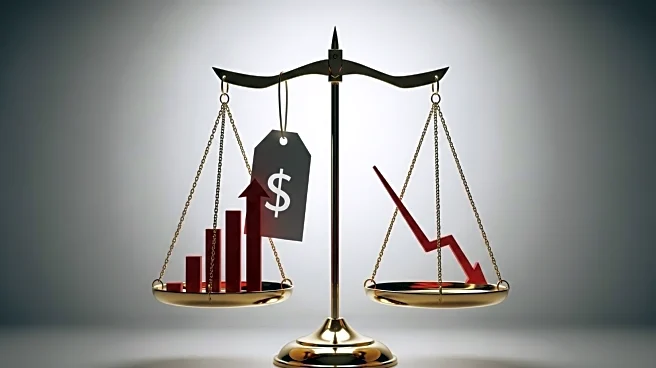What is the story about?
What's Happening?
The Federal Reserve is expected to announce a 25-basis-point rate cut in September 2025, with markets pricing in an 85% probability. This decision comes amid conflicting economic signals, including persistent inflation above the 2% target and signs of a softening labor market. The Fed's move is influenced by political pressures and the need to balance economic growth with inflation control. The rate cut is anticipated to benefit rate-sensitive sectors, particularly consumer discretionary and technology, while defensive sectors may underperform.
Why It's Important?
A rate cut by the Fed could significantly impact U.S. equity markets, particularly sectors sensitive to borrowing costs. Lower rates may boost consumer spending and inflate P/E ratios for growth stocks, benefiting companies like Netflix and Carnival. Small-cap stocks, especially those in the Russell 2000, may outperform due to their sensitivity to rate changes. Conversely, defensive sectors like utilities and healthcare may face reduced demand. The decision will test the Fed's ability to navigate economic uncertainties and political pressures.
What's Next?
Investors are closely monitoring the Fed's decision, which will shape equity valuations and sector performance. The timing and magnitude of the rate cut will influence capital flows and sector rotations. Political pressures and macroeconomic headwinds may affect the pace of future rate cuts, requiring investors to remain vigilant. The Fed's path forward remains uncertain, with potential implications for inflation and economic growth.
Beyond the Headlines
The Fed's decision may prompt discussions on the long-term impact of rate cuts on economic stability and inflation control. The role of political pressures in monetary policy decisions could be scrutinized, highlighting the need for independent central bank operations. The broader implications for global markets and trade relations may also be considered.
AI Generated Content
Do you find this article useful?














